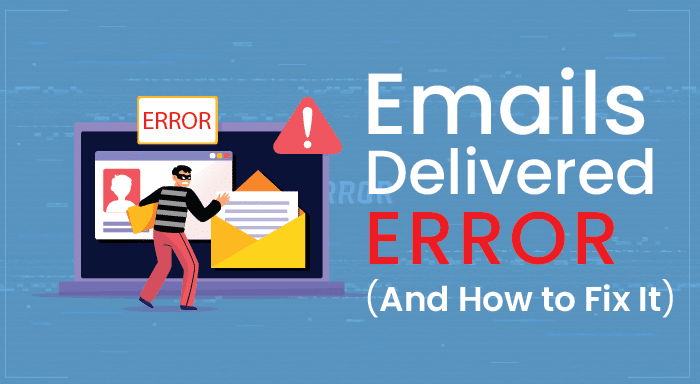While e-mail has been a very effective channel of communication in the digital age, many businesses come across one of the most frustrating issue of emails not being delivered. This can have a big effect on advertising campaigns, client interactions, and general company operations. If you have been wondering why your emails are not reaching their intended targets and how to fix this, you are at the right place.
Here are a few pointers for raising email deliverability rates.
Email deliverability is the ability to deliver any email to the recipients’ inboxes successfully. In other words, it’s not just about sending emails but making sure they land where they are intended to be, instead of being flagged as spam or lost in cyberspace. When discussing email deliverability, a number of aspects are taken into consideration, including recipient engagement, email content, and sender reputation.
Let’s look at some typical causes of non-delivery of your emails and possible solutions.
1. Poor Sender Reputation
Sender reputation is critical in email deliverability. It’s what ISPs use to decide whether your email is trustworthy or not. A poor sender reputation results from a high bounce rate, spam complaints, and low read rates or no engagement at all.
How to Fix It: Email Ramp-up
Successful email warmup involves gradually increasing the number of emails sent from a new IP address or domain. This is what helps to build up a good sender reputation over time. Start mailing to the smallest number of highly engaged people in your audience and work your way up gradually. It will show the ISPs that you’re a good sender and that your deliverability to the inbox is maximized. The key is consistency: do not let surge spikes in the volume bring flags with ISPs. This implies that you’re assisting ISPs in identifying and trusting your sending behaviors if you follow consistent sending patterns.
2. Ineffective Use of Authentication Protocols
Email authentication protocols like SPF (Sender Policy Framework), DKIM (DomainKeys Identified Mail), and DMARC (Domain-based Message Authentication, Reporting & Conformance) validate that your email comes from your domain. If it is not authenticated well enough, emails may be marked as suspicious.
How to Fix It: Implement Authentication Protocols
Be sure to authenticate your domain using SPF, DKIM, and DMARC. These procedures increase trustworthiness and security, which lowers the likelihood that your emails will be marked as spam. Keep updating and reviewing your DNS records regularly for these protocols to work effectively. The ability to monitor and analyze any type of authentication-related issue with the use of DMARC reports will enable you to address problems before they arise. Additionally, training your staff on these procedures may help them avoid unintentional configuration errors that could affect the deliverability of emails.
3. Spammy Content
The contents of your email may activate spam filters when it contains some of the following red flags: too much promotional language, all caps, and too many exclamation marks. Moreover, emails containing suspicious links and attachments are more likely to be flagged.
How to Fix It: Craft Quality Content
Focus on how relevant and informative your message is to your target audience. Avoid too much usage of sales terms and ensure that the email is well-structured, informative, and free from errors. Enhancement software on email deliverability will help you test the content before sending it to make sure that your mail meets the standards.
In order to interact with your recipients more, customize your emails as well. The possibilities of responses to personalized content are higher, and they are less prone to being marked as spam emails. Moreover, interactive components and dynamic information increase the appeal of emails to both recipients and ISPs by making them more engaging.
4. Lack of Recipient Engagement
Low engagement rates wreak havoc on the sender reputation. ISPs monitor how their users are engaging with your emails – if thousands upon thousands ignore, delete, or flag your mail as spam, you’re in deliverability trouble.
How to Fix It: Segment Your Audience
Segment your email list according to the activities and preferences of your recipients. You can raise engagement rates by distributing relevant and tailored content.
Additionally, clean your e-mail list regularly to avoid inactive subscribers. It means you’re sending mails only to those who will open or click on your emails. Check the engagement metrics to find out your most engaged subscribers and align the content with interests that further increase interaction rates. A/B testing of different content strategies will also help in deciding what will most resonate with the audience to increase engagement.
5. Technical Issues
At times, technical issues from your end can hamper email delivery. Your email server issues or inaccurate DNS settings could be among them. Issues with the email service provider may also cause it.
How to Fix It: Regular Technical Audits
Run regular audits on your email infrastructure. Check that your email server is working correctly and that your DNS settings are rightly configured. Another way to reduce technical issues is to use a reputable email service provider. All bounce rates of your emails must be kept under scrutiny for constant solutions to emerging issues. Making early adjustments can help your email campaign go well, and keeping your systems and software updated will prevent technical issues that could prevent emails from being delivered.
6. Not Using an Email Deliverability Tool
Unless you find the proper tools, email deliverability is quite hard to track and improve. An email deliverability optimization tool helps extensively track and understand your e-mail performance by highlighting what needs improvement.
How to Fix It: Leverage Email Deliverability Tools
Such tools can analyze your email campaigns and track them, while also monitoring the sender reputation and providing you with meaningful recommendations to improve deliverability. You may make data-driven decisions to enhance your email strategy by using these insights. The next step is to identify any patterns or trends that affect your deliverability and make the required corrections. Some tools offer real-time monitoring with instant alerts so that action could be taken in time to retain effectiveness by identifying the issues at their onset.
7. Ignoring SEO Principles
Although SEO is usually associated with websites, the principles can sometimes apply to your email campaigns; just like SEO for Ecommerce as an example. Optimizing the content of your email will then improve its visibility and chances of engagement.
How to Fix It: Apply SEO Principles to Emails
Introduce some SEO into your email marketing. Also, don’t forget to include relevant keywords in your subject line and the body of the email; make sure that emails are mobile-friendly; include call to action—be very clear regarding what you want the person reading the email to do. Emails that are more relevant and easily available will increase deliverability and increase recipient engagement. Keep the timing and frequency of emails in mind. Timing your emails when your audience is most likely to be involved boosts the open and click-through rate. You can also maximize open rates with relevant and compelling subject lines, similar to how you might craft meta descriptions for web SEO.
Conclusion
The success of any campaign on email marketing lies in ensuring that all your emails go through to the recipient.In order to increase deliverability rates, one can concentrate on sender reputation, authentication processes, high-quality content, recipient engagement, technological stability, and the right tools. Subsequently, sendability enhancement software and SEO for e-commerce can assist in getting your campaigns up and running, and an email warm-up is a great approach to get things going. Follow these tips and watch your email deliverability skyrocket.
Related Post





0 Comments